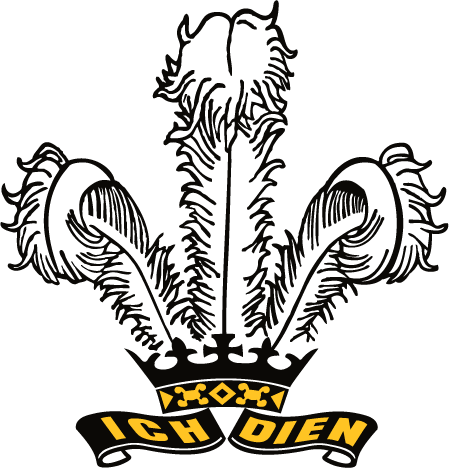In Text Citations
Formatting your paper
From Columbia College Library:
- Margins: 1" all around (except for the page number)
- Font: Easily readable typeface set to a standard size (Times-New Roman 12pt is always safe)
- Line-spacing: Double-space throughout the paper, including heading, title, block quotes, and Works Cited.
- Page Numbers: All pages are numbered in right hand corner, 1/2" from top. Last name appears before the page numbers.
- Heading: Top left corner. Your name, your instructor's name, course number, date. Date must be written dd Month yyyy.
- Title: Centered. Plain (no italics, underlining, or font variation). Standard double-spacing between heading/title, and title/first line of paper.
Find an example of a properly formatted paper from Purdue OWL at this link.
From UBC Library - MLA 9th Edition Citation Style Guide - Based on MLA Handbook, 9th edition.
In-text citations "are brief, unobtrusive references that direct readers to the works-cited-list entries for the sources you consulted and, where relevant =, to the location in the source being cited" (MLA Handbook 227). They should always appear right after the content you are summarizing, paraphrasing, or quoting. They only include a minimal amount of information, but create a link to a more fulsome citation at the end of your document.
"An in-text citation begins with the shortest piece of information that directs your reader to the entry in the works-cited list. Thus, it begins with whatever comes first in the entry: the author's name or the title (or description) of the work" (MLA Handbook 227). MLA in-text citations also typically includes some location information such as a page number. line number, time stamp, or paragraph number.
The format is as follows:
- (Author Last Name page number(s))
Paraphrasing & Quoting
Paraphrasing, or summarizing, and quoting takes two forms in your text. Either you indicate in your sentence that an author has said something (narrative), or you write something, and then attribute that to the author in brackets at the end of the idea (parenthetical).
Narrative in-text citation: Raimi outlines the risks and benefits of fracking through an economic analysis and energy security benefits (145).
Parenthetical in-text citation: Several benefits and risks can be identified in the implementation of fracking for oil extraction. Considerations include regulation, water pollution, tremors etc. (Raimi 145).
More than one author
| # of Authors | Narrative Example | Parenthetical Example |
| 1 | Bradley..... (17). | (Bradley 17) |
| 2 | Janmaat and Rahimova...... (238). | (Janmaat and Rahimova 238) |
| 3 or more | Beth Mei and colleagues argue....(189). | (Mei et al. 189) |
Group author Shorten the name to the shortest noun phrase for parenthetical citations and written out in full for narrative citations. |
According to a study by the American Historical Association.... (9). |
(American Historical 9) |
From Purdue Online Writing Lab, College of Liberal Arts
BASIC IN-TEXT CITATION RULES
In MLA Style, referring to the works of others in your text is done using parenthetical citations. This method involves providing relevant source information in parentheses whenever a sentence uses a quotation or paraphrase. Usually, the simplest way to do this is to put all of the source information in parentheses at the end of the sentence (i.e., just before the period). However, as the examples below will illustrate, there are situations where it makes sense to put the parenthetical elsewhere in the sentence, or even to leave information out.
General Guidelines
- The source information required in a parenthetical citation depends (1) upon the source medium (e.g. print, web, DVD) and (2) upon the source’s entry on the Works Cited page.
- Any source information that you provide in-text must correspond to the source information on the Works Cited page. More specifically, whatever signal word or phrase you provide to your readers in the text must be the first thing that appears on the left-hand margin of the corresponding entry on the Works Cited page.
IN-TEXT CITATIONS: AUTHOR-PAGE STYLE
MLA format follows the author-page method of in-text citation. This means that the author's last name and the page number(s) from which the quotation or paraphrase is taken must appear in the text, and a complete reference should appear on your Works Cited page. The author's name may appear either in the sentence itself or in parentheses following the quotation or paraphrase, but the page number(s) should always appear in the parentheses, not in the text of your sentence. For example:
Wordsworth stated that Romantic poetry was marked by a "spontaneous overflow of powerful feelings" (263).
Romantic poetry is characterized by the "spontaneous overflow of powerful feelings" (Wordsworth 263).
Wordsworth extensively explored the role of emotion in the creative process (263).
Both citations in the examples above, (263) and (Wordsworth 263), tell readers that the information in the sentence can be located on page 263 of a work by an author named Wordsworth. If readers want more information about this source, they can turn to the Works Cited page, where, under the name of Wordsworth, they would find the following information:
Wordsworth, William. Lyrical Ballads. Oxford UP, 1967.
IN-TEXT CITATIONS FOR PRINT SOURCES WITH KNOWN AUTHOR
For print sources like books, magazines, scholarly journal articles, and newspapers, provide a signal word or phrase (usually the author’s last name) and a page number. If you provide the signal word/phrase in the sentence, you do not need to include it in the parenthetical citation.
Human beings have been described by Kenneth Burke as "symbol-using animals" (3).
Human beings have been described as "symbol-using animals" (Burke 3).
These examples must correspond to an entry that begins with Burke, which will be the first thing that appears on the left-hand margin of an entry on the Works Cited page:
Burke, Kenneth. Language as Symbolic Action: Essays on Life, Literature, and Method. University of California Press, 1966.
For more information, visit the Purdue OWL Website.

